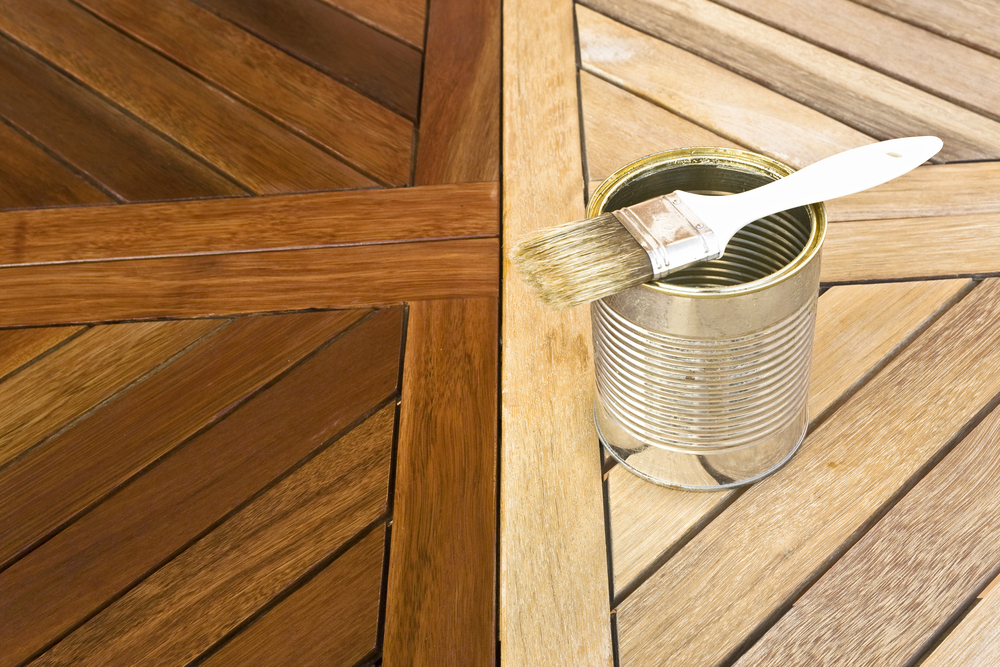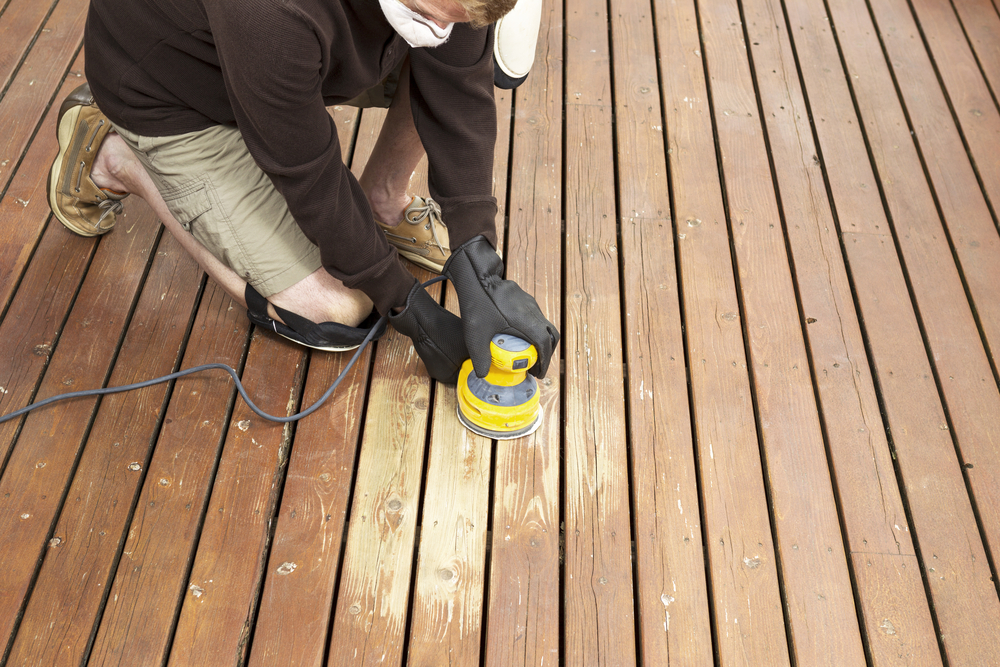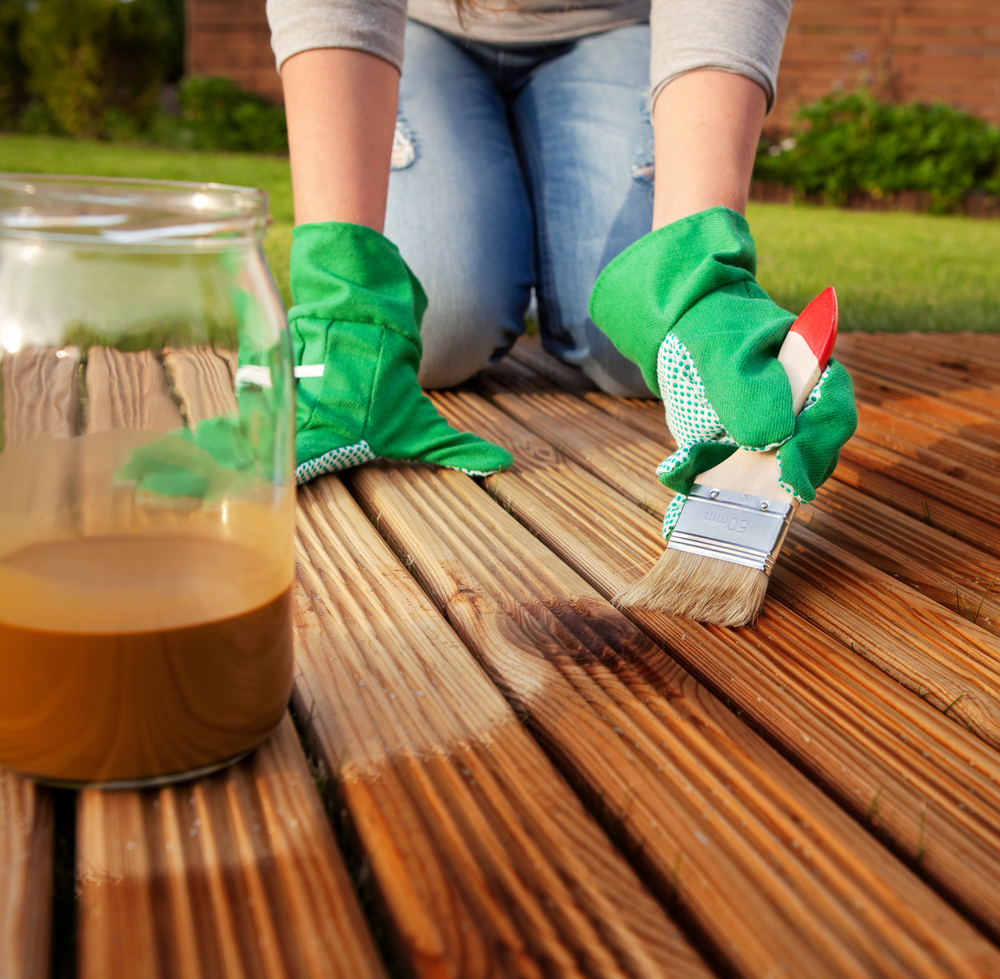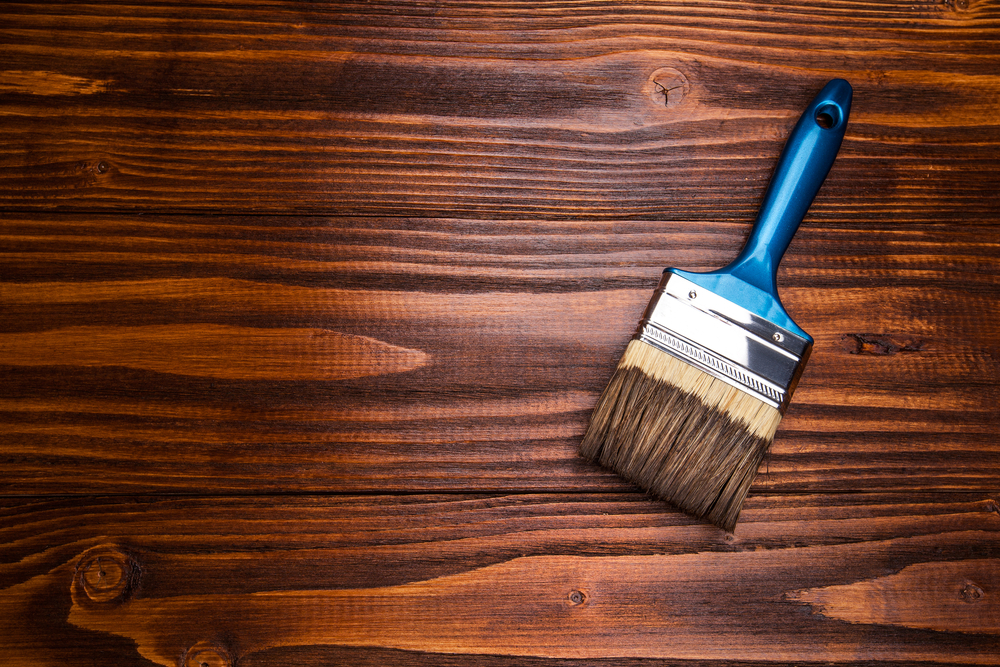There are many aesthetic and functional benefits to staining the exterior wood of your home. Not only will it bring new life and improve the overall appearance of your outdoor spaces, but exterior wood staining will protect the wood from water, rot, and even sunlight.
Before you can take advantage of these benefits, the stain must be applied correctly. Fred is here to help you with the process, with our guide for how to go about staining exterior wood.
Planning

Before you can stain exterior wood, you need to know what type of stain you are looking for. A solid color stain is great for wood that is weathered, as it can hide any marks, splinters, or grain. In comparison, a semi-transparent stain doesn’t cover the wood nearly as much as a solid color stain. A semi-transparent stain highlights the features of the wood rather than hiding them, but still adds a renewed color.
Preparation

When it comes to staining, brand new wood that has just been installed can be treated immediately. However, if the wood is older and has been exposed to the environment, a little preparation is required before you can apply the coat. You will need to sand the wood before staining it, removing the weathered down exterior so that your stain can really settle. It’s also helpful with getting rid of any dust, dirt, splinters, or residual color of a previous stain that are in your way.
Application

Staining wood is very similar to painting a wall. You need to use the right brush for the right kind of stain, so make sure to use a natural-bristle brush for oil stains, and a synthetic bristle brush for latex stains. Test the stain on the wood first to see its color, and brush in the direction of the grain when you begin the full staining process. You must also continuously mix the stain throughout the entire process, as to maintain a consistent color.
Finishing Up

Once you start the staining process, you don’t want to stop until the entire area you are coating is finished; otherwise it may cause unevenness in the color. When you are finally finished, you will need to wait 24 hours for the stain to completely dry. A second coat can then be applied, if you are looking to make your stain darker. Other than that, you are done!
Staining wood is a project that can be tackled alone, but may require a professional depending on the project area. If you find yourself asking a lot of questions or need professional help to get the job done, you can always give us a call and schedule Fred, the first name in home repairs.
